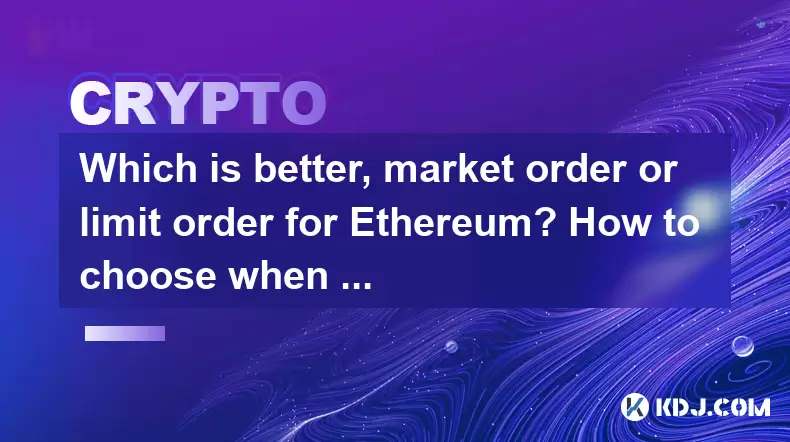-
 Bitcoin
Bitcoin $119600
0.45% -
 Ethereum
Ethereum $4671
8.16% -
 XRP
XRP $3.250
2.78% -
 Tether USDt
Tether USDt $0.9999
0.01% -
 BNB
BNB $838.0
3.17% -
 Solana
Solana $198.5
12.77% -
 USDC
USDC $0.9997
-0.01% -
 Dogecoin
Dogecoin $0.2396
6.18% -
 TRON
TRON $0.3547
2.21% -
 Cardano
Cardano $0.8583
9.20% -
 Chainlink
Chainlink $24.42
13.29% -
 Hyperliquid
Hyperliquid $44.08
1.42% -
 Stellar
Stellar $0.4492
2.37% -
 Sui
Sui $3.915
6.09% -
 Bitcoin Cash
Bitcoin Cash $612.9
3.02% -
 Hedera
Hedera $0.2627
5.34% -
 Ethena USDe
Ethena USDe $1.000
-0.03% -
 Avalanche
Avalanche $24.94
7.83% -
 Litecoin
Litecoin $132.6
10.48% -
 Toncoin
Toncoin $3.439
1.39% -
 UNUS SED LEO
UNUS SED LEO $9.212
2.34% -
 Shiba Inu
Shiba Inu $0.00001371
4.89% -
 Uniswap
Uniswap $11.54
1.13% -
 Polkadot
Polkadot $4.211
7.67% -
 Dai
Dai $0.9998
-0.03% -
 Cronos
Cronos $0.1649
-1.62% -
 Ethena
Ethena $0.7975
-1.46% -
 Pepe
Pepe $0.00001235
9.15% -
 Bitget Token
Bitget Token $4.445
0.46% -
 Aave
Aave $323.7
8.18%
Which is better, market order or limit order for Ethereum? How to choose when trading automatically?
When trading Ethereum, choose between market orders for immediate execution or limit orders for price control, considering market volatility and your risk tolerance.
May 19, 2025 at 02:07 pm

When trading Ethereum, one of the crucial decisions you face is choosing between a market order and a limit order. Each type of order has its advantages and disadvantages, and understanding these can help you make more informed trading decisions. In this article, we'll delve into the specifics of both market and limit orders, discuss how to choose between them when trading Ethereum, and explore considerations for automated trading.
What is a Market Order?
A market order is an order to buy or sell Ethereum at the current market price. When you place a market order, you are essentially telling the exchange to execute the trade immediately at the best available price. This type of order is useful when you want to enter or exit a position quickly.
Advantages of Market Orders:
- Immediate Execution: Market orders are executed almost instantly, ensuring that you can buy or sell Ethereum without delay.
- Guaranteed Execution: As long as there is liquidity in the market, a market order will be filled, providing certainty that your trade will be completed.
Disadvantages of Market Orders:
- Price Slippage: Since market orders are executed at the current market price, you might end up buying or selling at a price that is slightly different from what you expected, especially in volatile markets.
- Lack of Control: You have no control over the exact price at which your order is filled, which can be a significant drawback if the market is moving rapidly.
What is a Limit Order?
A limit order allows you to specify the price at which you want to buy or sell Ethereum. When you place a limit order, it will only be executed if the market reaches your specified price. This type of order gives you more control over the price at which you trade.
Advantages of Limit Orders:
- Price Control: With a limit order, you can set the exact price at which you want to trade, giving you greater control over your entry and exit points.
- No Slippage: Since the order is executed at your specified price, you avoid the risk of price slippage that can occur with market orders.
Disadvantages of Limit Orders:
- Potential for Non-Execution: If the market never reaches your specified price, your order may not be filled, leaving you unable to complete your trade.
- Delayed Execution: Limit orders may take longer to fill, especially if the market is moving away from your specified price.
Choosing Between Market and Limit Orders for Ethereum
When deciding whether to use a market order or a limit order for trading Ethereum, several factors come into play:
Market Volatility: In highly volatile markets, a market order can help you enter or exit a position quickly, but you risk slippage. A limit order can protect you from adverse price movements, but it might not be filled if the market moves away from your specified price.
Trading Strategy: If your strategy involves entering or exiting positions at specific price levels, a limit order is more suitable. If your priority is to execute a trade immediately, a market order is the better choice.
Liquidity: In markets with high liquidity, market orders are less likely to experience significant slippage. In less liquid markets, a limit order can help you avoid unfavorable prices.
Risk Tolerance: If you are more risk-averse, a limit order can provide more control over your trading outcomes. If you are comfortable with the potential for slippage, a market order can be more efficient.
Using Market and Limit Orders in Automated Trading
Automated trading, or algorithmic trading, involves using software to execute trades based on predefined criteria. When setting up automated trading for Ethereum, the choice between market and limit orders can significantly impact your strategy's performance.
Setting Up Market Orders in Automated Trading:
- Immediate Execution: Market orders are ideal for strategies that require immediate action, such as reacting to market news or sudden price movements.
- Risk Management: You can set stop-loss orders using market orders to exit a position quickly if the market moves against you.
Setting Up Limit Orders in Automated Trading:
- Price Precision: Limit orders are suitable for strategies that require entering or exiting at specific price levels, such as scalping or range trading.
- Order Management: You can use limit orders to manage your positions more precisely, setting multiple buy and sell orders at different price levels to capture market movements.
Combining Market and Limit Orders:
- Hybrid Strategies: Some automated trading strategies combine market and limit orders to balance speed and precision. For example, you might use a market order to enter a position quickly and then use limit orders to exit at specific price targets.
Practical Example: Placing a Market Order for Ethereum
Let's walk through the steps to place a market order for Ethereum on a typical cryptocurrency exchange:
- Log into your exchange account: Ensure you have a verified account on a reputable cryptocurrency exchange.
- Navigate to the trading section: Find the trading interface where you can buy and sell cryptocurrencies.
- Select the Ethereum trading pair: Choose the pair you want to trade, such as ETH/USD or ETH/BTC.
- Choose the order type: Select "Market Order" from the available options.
- Enter the amount: Specify the amount of Ethereum you want to buy or sell.
- Review and confirm: Double-check the details of your order, including the estimated price and fees, then confirm the order.
- Monitor the order: Once placed, you can monitor the order status until it is filled.
Practical Example: Placing a Limit Order for Ethereum
Now, let's go through the steps to place a limit order for Ethereum:
- Log into your exchange account: Ensure you have a verified account on a reputable cryptocurrency exchange.
- Navigate to the trading section: Find the trading interface where you can buy and sell cryptocurrencies.
- Select the Ethereum trading pair: Choose the pair you want to trade, such as ETH/USD or ETH/BTC.
- Choose the order type: Select "Limit Order" from the available options.
- Enter the price: Specify the price at which you want to buy or sell Ethereum.
- Enter the amount: Specify the amount of Ethereum you want to buy or sell.
- Review and confirm: Double-check the details of your order, including the price and fees, then confirm the order.
- Monitor the order: Once placed, you can monitor the order status until it is filled or expires.
Frequently Asked Questions
Q: Can I change a market order to a limit order after it has been placed?
A: Once a market order is placed, it is usually executed immediately, and you cannot change it to a limit order. However, some exchanges may offer features like "order cancellation" if the order has not been fully executed. Always check the specific policies of your exchange.
Q: How do I know if my limit order will be filled?
A: The likelihood of a limit order being filled depends on market conditions. If the market reaches your specified price, your order will be filled. You can monitor the order book and market trends to gauge the probability of your order being executed.
Q: Are there any fees associated with market and limit orders?
A: Yes, both market and limit orders typically incur fees, which can vary by exchange. Market orders may have higher fees due to the immediate execution, while limit orders might have different fee structures based on whether they are filled or expire. Always review the fee schedule of your exchange before trading.
Q: Can I use both market and limit orders in a single trading strategy?
A: Yes, many traders use a combination of market and limit orders to achieve their trading goals. For example, you might use a market order to enter a position quickly and then use limit orders to set profit targets and stop-loss levels. This hybrid approach can help balance speed and precision in your trading strategy.
Disclaimer:info@kdj.com
The information provided is not trading advice. kdj.com does not assume any responsibility for any investments made based on the information provided in this article. Cryptocurrencies are highly volatile and it is highly recommended that you invest with caution after thorough research!
If you believe that the content used on this website infringes your copyright, please contact us immediately (info@kdj.com) and we will delete it promptly.
- Meme Coins: Chasing the 2025 Surge – Which Will Moonshot?
- 2025-08-13 10:25:23
- Bitcoin's Wild Ride: Rally, Pullback, and What's Next
- 2025-08-13 10:25:23
- Bitcoin, Bitmax, and Institutional Demand: A New Era of Crypto Investment
- 2025-08-13 10:45:12
- Solana, ROAM, and Airdrops: What's the Buzz in 2025?
- 2025-08-13 11:35:13
- Riding the Crypto Wave: NFTs, DeFi, and the Market's $4.2T High
- 2025-08-13 11:35:13
- Cold Wallet: Cashback, Crypto, and Cutting Gas Fees Like a Boss
- 2025-08-13 11:45:17
Related knowledge

How to purchase Aragon (ANT)?
Aug 09,2025 at 11:56pm
Understanding Aragon (ANT) and Its PurposeAragon (ANT) is a decentralized governance token that powers the Aragon Network, a platform built on the Eth...

Where to trade Band Protocol (BAND)?
Aug 10,2025 at 11:36pm
Understanding the Role of Private Keys in Cryptocurrency WalletsIn the world of cryptocurrency, a private key is one of the most critical components o...

What is the most secure way to buy Ocean Protocol (OCEAN)?
Aug 10,2025 at 01:01pm
Understanding Ocean Protocol (OCEAN) and Its EcosystemOcean Protocol (OCEAN) is a decentralized data exchange platform built on blockchain technology,...

How to invest in Kyber Network Crystal v2 (KNC)?
Aug 12,2025 at 05:21pm
Understanding Kyber Network Crystal v2 (KNC)Kyber Network is a decentralized liquidity hub built on the Ethereum blockchain that enables instant token...

Where can I buy UMA (UMA)?
Aug 07,2025 at 06:42pm
Understanding UMA and Its Role in Decentralized FinanceUMA (Universal Market Access) is an Ethereum-based decentralized finance (DeFi) protocol design...

How to sell my Ren (REN) tokens?
Aug 13,2025 at 11:35am
Understanding REN Tokens and Their Role in Decentralized FinanceREN is an ERC-20 token that powers the Ren protocol, a decentralized interoperability ...

How to purchase Aragon (ANT)?
Aug 09,2025 at 11:56pm
Understanding Aragon (ANT) and Its PurposeAragon (ANT) is a decentralized governance token that powers the Aragon Network, a platform built on the Eth...

Where to trade Band Protocol (BAND)?
Aug 10,2025 at 11:36pm
Understanding the Role of Private Keys in Cryptocurrency WalletsIn the world of cryptocurrency, a private key is one of the most critical components o...

What is the most secure way to buy Ocean Protocol (OCEAN)?
Aug 10,2025 at 01:01pm
Understanding Ocean Protocol (OCEAN) and Its EcosystemOcean Protocol (OCEAN) is a decentralized data exchange platform built on blockchain technology,...

How to invest in Kyber Network Crystal v2 (KNC)?
Aug 12,2025 at 05:21pm
Understanding Kyber Network Crystal v2 (KNC)Kyber Network is a decentralized liquidity hub built on the Ethereum blockchain that enables instant token...

Where can I buy UMA (UMA)?
Aug 07,2025 at 06:42pm
Understanding UMA and Its Role in Decentralized FinanceUMA (Universal Market Access) is an Ethereum-based decentralized finance (DeFi) protocol design...

How to sell my Ren (REN) tokens?
Aug 13,2025 at 11:35am
Understanding REN Tokens and Their Role in Decentralized FinanceREN is an ERC-20 token that powers the Ren protocol, a decentralized interoperability ...
See all articles

























































































